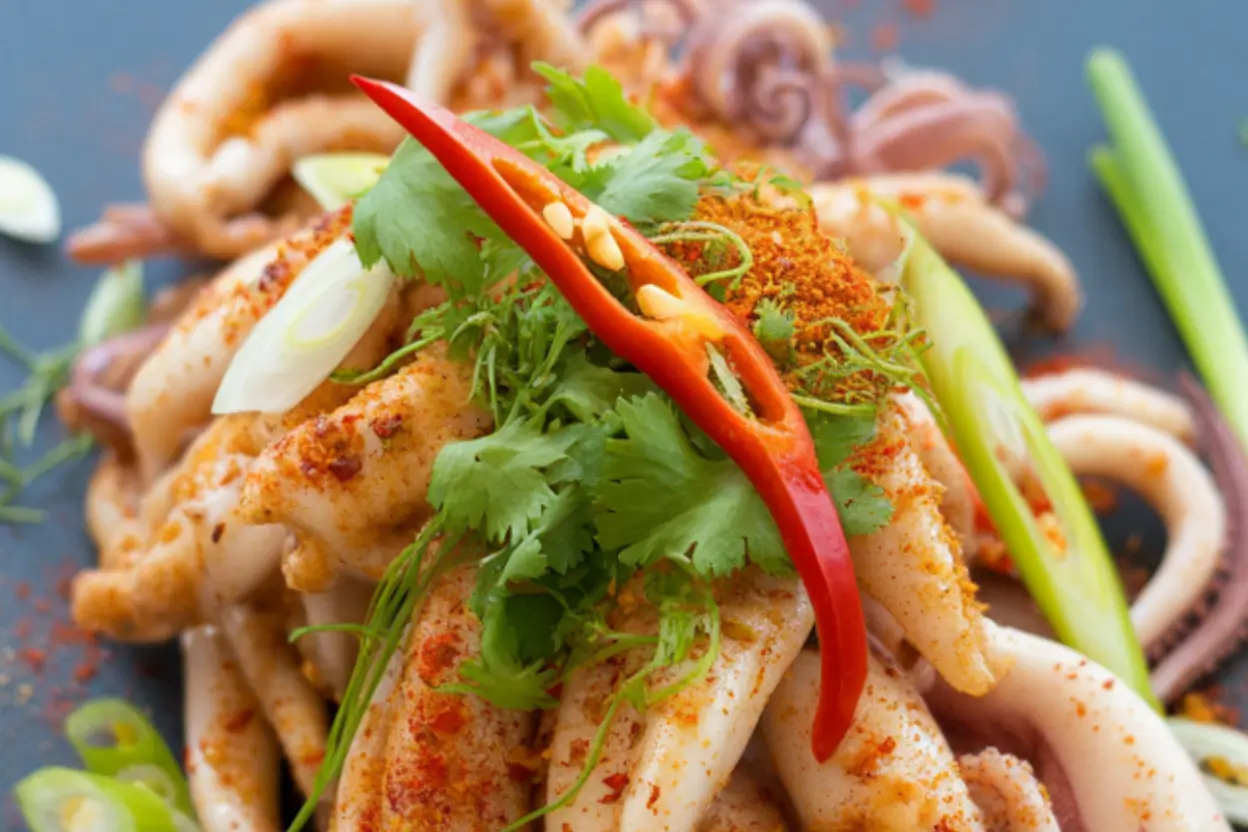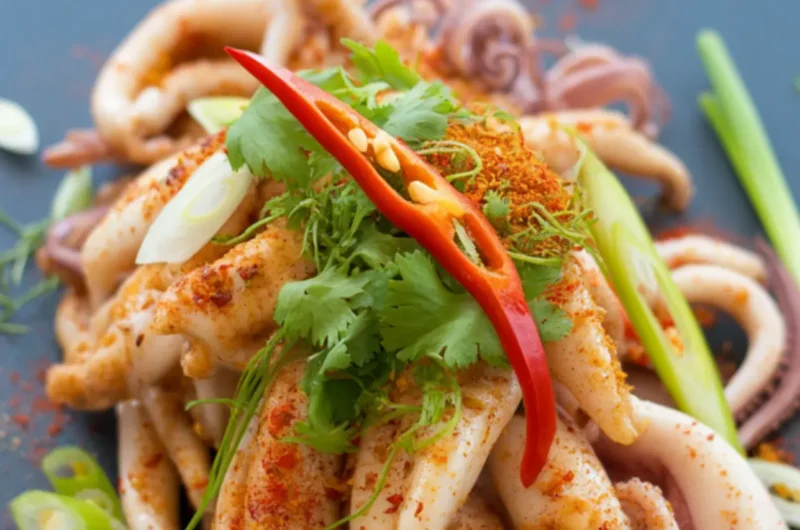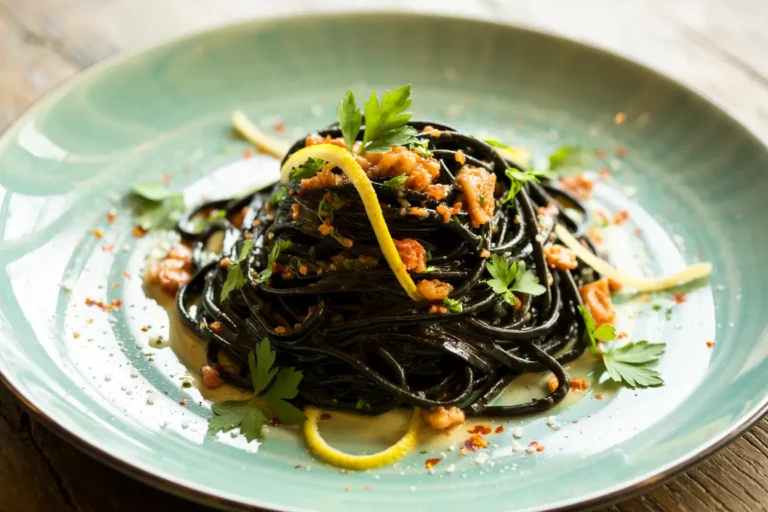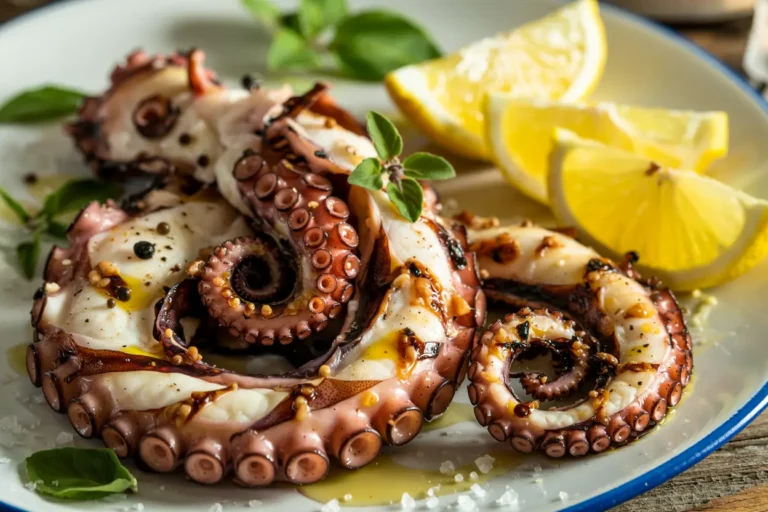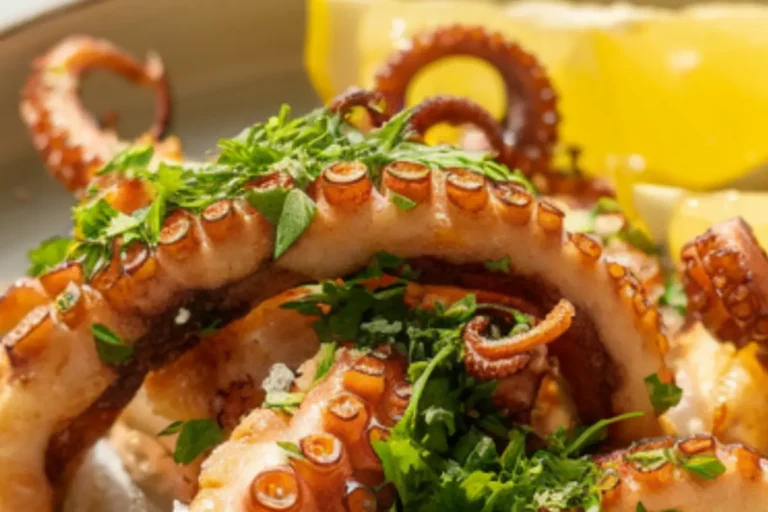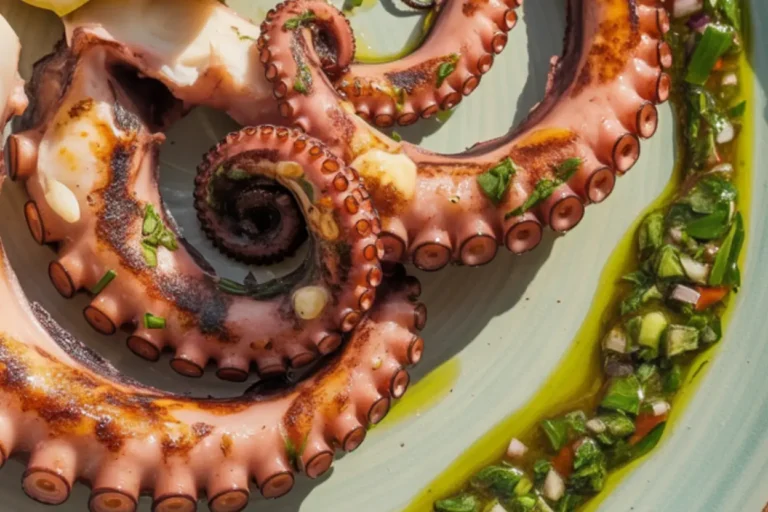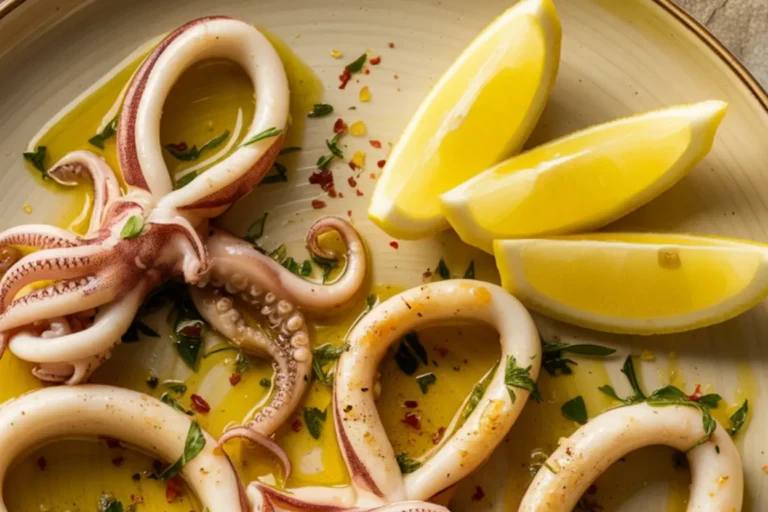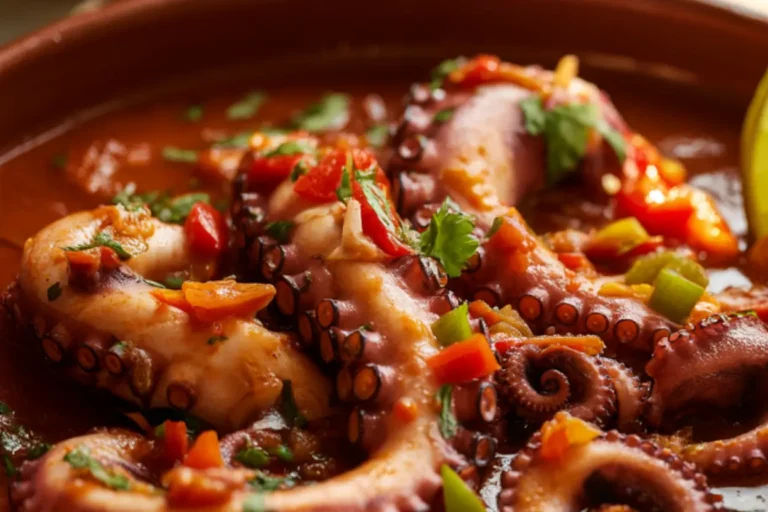Chinese Salt and Pepper Squid: 5 Steps to Crispy Perfection
Table of Contents
After years of experimenting and fine-tuning seafood recipes, I can confidently say that nailing Chinese Salt and Pepper Squid at home is one of the most satisfying accomplishments for any home cook. This beloved restaurant classic, known for its crispy exterior and tender squid, may seem tough to replicate without pro-level tools, but the truth is, it’s entirely achievable once you grasp a few essential techniques.
Thank you for reading this post, don't forget to subscribe!The magic of Salt and Pepper Squid lies in its beautiful simplicity: tender squid pieces coated in a light, crispy batter, seasoned with the perfect aromatic salt and pepper mixture, and finished with a quick stir-fry of garlic, chilies, and green onions. When done right, it creates an absolutely addictive combination of textures and flavors that will have everyone reaching for more. Let me walk you through exactly how to achieve restaurant-quality results in your own kitchen.
How to Make Chinese Salt and Pepper Squid
Quick Overview
Chinese Salt and Pepper Squid delivers that magical combination of crispy exterior and tender squid interior, enhanced by the aromatic punch of garlic, chilies, and green onions. What makes this dish truly special is its textural contrast – the satisfying crunch of the light coating giving way to perfectly cooked, tender squid that still has a pleasant, gentle chew. The seasoning is deceptively simple yet incredibly flavorful, with the warming, fragrant Sichuan peppercorns complementing the fresh chilies and garlic for a dish that’s savory, slightly spicy, and utterly delicious.
This restaurant favorite comes together surprisingly quickly, taking about 40 minutes total – 25 minutes of preparation (including marinating time) and 15 minutes of cooking. The key to this dish is having all components prepared before you begin cooking, as the frying process moves fast and the final stir-fry takes just seconds to complete. The reward for this preparation is squid that’s crispy yet light, never greasy or heavy, with a tender texture that’s often difficult to achieve with squid (which can easily become rubbery when overcooked).
Perhaps most satisfying is how this dish transforms a humble ingredient into something spectacular. The squid itself provides a subtle backdrop for the aromatic seasonings, creating a dish that feels simultaneously familiar and exciting. Each bite offers a different sensation – from the initial crunch to the tender squid to the burst of flavor from the aromatic salt and pepper mixture – making this an incredibly satisfying culinary experience that will quickly become a favorite in your cooking repertoire.
The Ingredients I Use to Bring My Chinese Salt and Pepper Squid to Life
For the squid:
- 1 pound (450g) squid (calamari), cleaned
- 1 tablespoon Shaoxing wine (Chinese rice wine)
- 1 teaspoon grated fresh ginger
- 1/2 teaspoon white pepper
- 1/4 teaspoon salt
For the salt and pepper mixture:
- 1 tablespoon sea salt
- 2 teaspoons Sichuan peppercorns (or 1 teaspoon white pepper + 1 teaspoon black pepper)
- 1/2 teaspoon five-spice powder
For the coating:
- 1/2 cup cornstarch
- 1/3 cup all-purpose flour
- 1 teaspoon baking powder
- 1/4 teaspoon salt
- 1/4 cup ice-cold water
- 1 egg, lightly beaten
For the stir-fry:
- 4 cups vegetable oil for deep-frying
- 4 cloves garlic, minced
- 2-3 Thai chilies or 1 jalapeño, thinly sliced
- 4 green onions (scallions), cut into 1-inch pieces
- 1 small red bell pepper, thinly sliced (optional)
For garnish:
- Additional sliced green onions
- Fresh cilantro leaves
- Lime wedges for serving
Step-by-Step Instructions
Step 1: Prepare and Marinate the Squid
If you’re working with whole squid, start by cleaning it thoroughly. Gently pull the head and tentacles away from the body (mantle). Remove and discard the quill (the translucent, plastic-like cartilage inside the body), the outer skin, and the beak (the hard part located at the center of the tentacles). Rinse everything well under cold running water.
Cut the body (tube) into 3/4-inch rings. Trim the tentacles just above the eyes and cut into bite-sized pieces if large. Pat all pieces completely dry using paper towels – this is crucial for achieving a crispy coating.
In a medium bowl, combine the dried squid pieces with Shaoxing wine, grated ginger, white pepper, and salt. Toss gently to coat all pieces evenly. Cover and let marinate in the refrigerator for 15-20 minutes (but no longer than 30 minutes, as the acid in the wine will start to “cook” the squid).
Step 2: Create the Salt and Pepper Seasoning
While the squid is marinating, prepare your signature salt and pepper mixture. In a small, dry skillet over medium heat, toast the sea salt and Sichuan peppercorns (or regular pepper if using) for about 2-3 minutes, shaking the pan occasionally, until they become fragrant. You’ll know they’re ready when you can smell the peppery aroma strongly.
Transfer the toasted mixture to a mortar and pestle or a spice grinder. Add the five-spice powder and grind to a medium-fine powder – not too fine as you want some texture, but not so coarse that the peppercorns remain whole. Set aside.
Step 3: Prepare the Coating and Heat the Oil
In a medium bowl, whisk together the cornstarch, all-purpose flour, baking powder, and salt. In a separate small bowl, mix the ice-cold water with the beaten egg until well combined. Gradually pour the wet mixture into the dry ingredients, whisking until just combined. The batter should be slightly lumpy and resemble a thick pancake batter. If it seems too thick, thin it out by adding cold water a teaspoon at a time.
Add vegetable oil to a deep, heavy-bottomed pot, wok, or deep fryer, ensuring it’s at least 3 inches deep but no more than halfway up the vessel. Heat the oil to 350–375°F (175–190°C). If you don’t have a thermometer, drop a small bit of batter into the oil—if it sizzles right away and rises to the surface, the oil is ready.
Step 4: Fry the Squid to Crispy Perfection
Remove the squid from the refrigerator and drain off any excess marinade. Working in batches (about one-third of the squid at a time), dip the pieces into the batter, allowing any excess to drip off. Carefully lower them into the hot oil, one by one, to prevent sticking together.
Fry for about 2-2.5 minutes until golden and crispy. Be careful not to overcook – squid becomes tough and rubbery if cooked too long. Using a spider strainer or slotted spoon, remove the squid and transfer to a wire rack set over a baking sheet to drain (not paper towels, which can make the coating soggy).
Maintain the oil temperature between batches by allowing it to return to 350-375°F before adding the next batch. Continue until all the squid is fried.
Step 5: Stir-fry with Aromatics and Finish with Salt and Pepper
This final step brings everything together and creates that distinctive restaurant-quality finish. Once all the squid has been fried, carefully pour off all but 2 tablespoons of the hot oil from your wok or into a separate pan (be extremely cautious when handling hot oil).
Heat the reserved 2 tablespoons of oil over high heat until shimmering. Add the minced garlic, sliced chilies, green onions, and red bell pepper (if using). Stir-fry for just 20-30 seconds until fragrant but not browned.
Quickly add all the fried squid back to the wok, sprinkle with about half of your prepared salt and pepper mixture, and toss vigorously for about 10-15 seconds to coat everything evenly and heat through. Be careful not to cook much longer, as this can toughen the squid.
Immediately transfer to a serving plate. Sprinkle with a bit more of the salt and pepper mixture to taste (you may not need to use all of it – save the remainder for future use). Garnish with additional sliced green onions, fresh cilantro leaves, and lime wedges.
Serve immediately while hot and crispy for the ultimate Salt and Pepper Squid experience.
What to Serve Chinese Salt and Pepper Squid With
This crispy, aromatic seafood dish pairs beautifully with a variety of sides and accompaniments:
Classic Chinese pairings:
- Steamed white rice to soak up the flavors
- Garlicky stir-fried bok choy or Chinese broccoli.
- Hot and sour soup for a complete meal
- Plain congee (rice porridge) for a traditional contrast of textures
For an appetizer spread:
- Serve alongside spring rolls or dumplings
- Chinese cucumber salad for a cooling element
- Lettuce cups to create wraps with the squid
- Sweet chili sauce or Chinese black vinegar for dipping
For a larger feast:
- Pair with other Chinese seafood dishes like ginger scallion lobster
- Mapo tofu for a spicy counterpart
- Chinese eggplant with garlic sauce
- Yang Chow fried rice
Beverage pairings:
- Cold Chinese beer like Tsingtao or Harbin
- Jasmine tea is a traditional non-alcoholic option
- Dry Riesling or Gewürztraminer if serving wine
- Plum wine is something sweet to balance the salt and heat
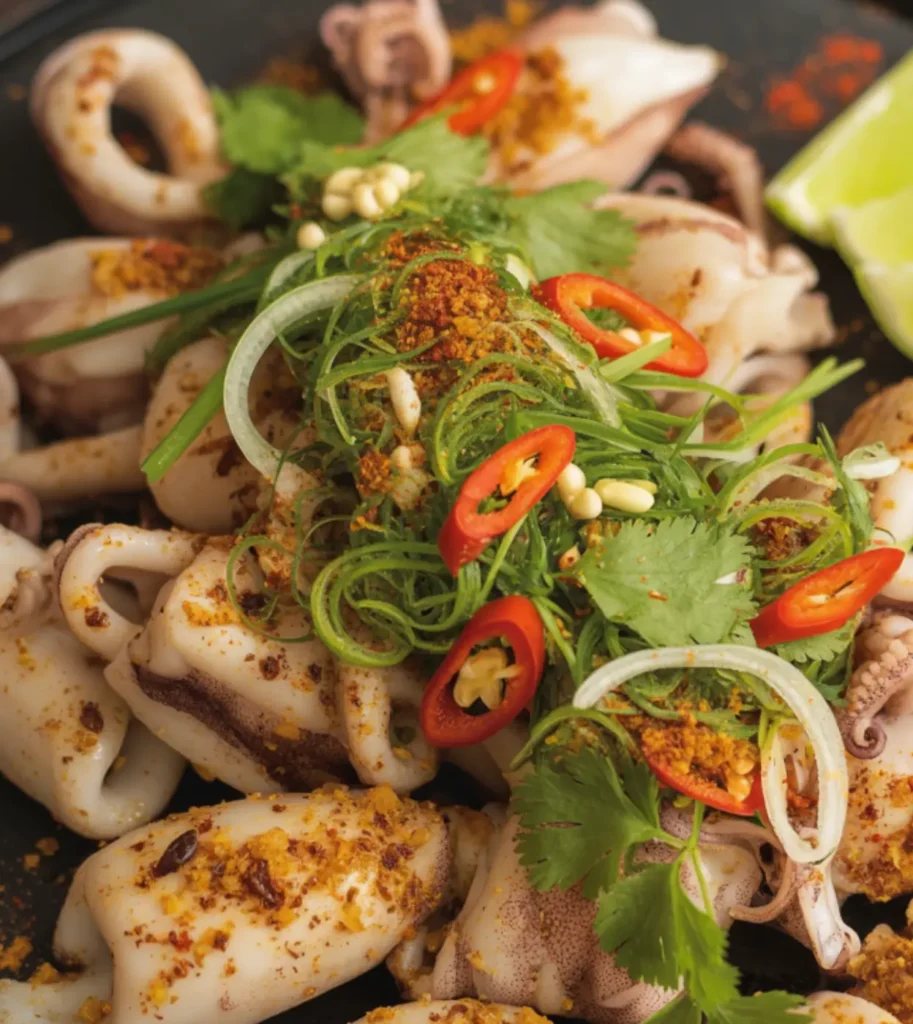
Top Tips for Perfecting Chinese Salt and Pepper Squid
1. Squid selection and preparation
Look for squid that smells fresh and oceanic, never fishy or ammonia-like. Fresh is ideal, but high-quality frozen squid works very well for this dish. If using frozen, thaw it completely in the refrigerator overnight and pat thoroughly dry before marinating.
The size of your squid pieces matters: 3/4-inch rings cook quickly and evenly while remaining tender. Larger pieces may require longer cooking, risking toughness, while smaller pieces can overcook before the coating gets crispy.
2. The two temperature rules
Remember the two cardinal rules for cooking squid: either very quickly (under 2-3 minutes) or very slowly (at least 30 minutes) – anything in between results in tough, rubbery squid. For this recipe, we’re using the quick method.
Equally important is the temperature of your oil. Too cool (under 350°F/175°C), and the squid will absorb excess oil and become greasy; too hot (over 390°F/200°C), and the coating will burn before the squid cooks through. Invest in a good thermometer for consistent results.
3. Batter secrets
The cornstarch-flour combination is crucial for the signature light, crispy texture. Using all cornstarch makes it too brittle; all flour makes it too heavy. The balance creates that perfect crunch.
Ice-cold water is non-negotiable – it prevents the gluten in the flour from developing too much, which would make the coating tough instead of crisp. Some chefs even keep their mixing bowl in the freezer before making the batter.
4. Authentic salt and pepper blend
Traditional Chinese salt and pepper squid uses Sichuan peppercorns, which have a unique numbing quality different from regular black pepper. If you can find them, they’re worth using for authentic flavor. Toasting the salt and peppercorns enhances their aroma significantly – don’t skip this step.
5. Customization options:
- Heat level: Adjust the number and type of chilies to suit your preference
- Vegetable additions: Try adding thinly sliced onions or bell peppers to the final stir-fry
- Coating variations: Add a teaspoon of sesame seeds to the batter for extra crunch
- Spice alternatives: If you can’t find Sichuan peppercorns, a mixture of black and white pepper makes a good substitute
- Gluten-free option: Use rice flour instead of all-purpose flour
6. The quick fry technique
The final stir-fry with aromatics should be very brief – just long enough to warm the garlic, chilies, and green onions and release their flavors. Prolonged cooking at this stage will make the squid tough and cause the coating to lose its crispness.
Storing and Reheating Tips
Chinese Salt and Pepper Squid is undeniably at its best when freshly made and served immediately. However, life happens, and sometimes you have leftovers. Here’s how to handle them:
Short-term storage:
If you have leftovers, let them cool fully before transferring to an airtight container lined with paper towels to help absorb moisture. Refrigerate for up to 2 days. Note that the coating may soften and lose its crisp texture during storage.
Reheating for best results:
To recapture some of the original crispiness, avoid the microwave, which will make the squid tough and the coating soggy. Instead, use one of these methods:
Oven method (preferred):
- Preheat your oven to 375°F (190°C)
- Place the squid in a single layer on a baking sheet
- Bake for 7-10 minutes until heated through and somewhat crispy again
Air fryer method (excellent):
- Preheat air fryer to 350°F (175°C)
- Arrange the squid in a single layer
- Heat for 3-4 minutes until warmed and crispy
Component preparation for planning ahead:
If you’d like to prep components of this recipe ahead of time:
- The salt and pepper mixture can be made up to a month ahead and stored in an airtight container
- The squid can be cleaned and cut up to 24 hours ahead, and stored in the refrigerator
- The coating mixture (dry ingredients) can be combined ahead of time, but don’t add the wet ingredients until right before cooking
Not recommended:
- Freezing the cooked dish (the texture of both the coating and the squid deteriorates significantly)
- Making the batter ahead of time (it won’t remain light and crispy)
- Frying the squid more than 30 minutes before serving (it won’t stay crispy)
For meal prep or entertaining:
If serving for a party, consider doing all the prep ahead of time (cleaning squid, making salt mixture, preparing coating dry ingredients), then doing the actual frying right before guests arrive. The fried squid can be held in a warm oven (200°F/95°C) for about 15-20 minutes before the final stir-fry with aromatics.
Chinese Salt and Pepper Squid represents the perfect fusion of simplicity and technique. While the ingredient list is relatively short and the cooking process straightforward, it’s the attention to detail – properly cleaned squid, precisely heated oil, quick cooking time, and that signature aromatic finish – that elevates this dish from good to unforgettable. Master these five steps, and you’ll not only impress friends and family but also satisfy that craving for authentic Chinese cuisine without leaving home. The combination of tender squid, crispy coating, and the aromatic salt and pepper seasonings creates a dish that’s greater than the sum of its parts – a true testament to the beauty of Chinese culinary tradition.
click here to follow me on pinterest
Chinese Salt and Pepper Squid: 5 Steps to Crispy Perfection
Cuisine: ChineseDifficulty: Moderate4
servings20
minutes10
minutes320-400
kcalThis iconic Chinese restaurant favorite is a crispy, aromatic dish made by deep-frying tender squid coated in a light batter, then tossing it with fragrant garlic, chilies, green onions, and a punchy mix of salt, Sichuan pepper, and five-spice powder. It’s bold, addictive, and surprisingly simple to recreate at home with the right technique.
Ingredients
1 pound (450g) squid (calamari), cleaned
1 tablespoon Shaoxing wine (Chinese rice wine)
1 teaspoon grated fresh ginger
1/2 teaspoon white pepper
1/4 teaspoon salt
1 tablespoon sea salt
2 teaspoons Sichuan peppercorns (or 1 teaspoon white pepper + 1 teaspoon black pepper)
1/2 teaspoon five-spice powder
1/2 cup cornstarch
1/3 cup all-purpose flour
1 teaspoon baking powder
1/4 teaspoon salt
1/4 cup ice-cold water
1 egg, lightly beaten
4 cups vegetable oil for deep-frying
4 cloves garlic, minced
2-3 Thai chilies or 1 jalapeño, thinly sliced
4 green onions (scallions), cut into 1-inch pieces
1 small red bell pepper, thinly sliced (optional)
Additional sliced green onions
Fresh cilantro leaves
Lime wedges for serving
Instructions
- Clean and Marinate the Squid
Clean the squid by removing the head, tentacles, beak, skin, and quill. Slice the body into rings and trim the tentacles. Pat dry thoroughly. In a bowl, mix the squid with Shaoxing wine, grated ginger, white pepper, and salt. Marinate in the fridge for 15–20 minutes. - Make the Salt & Pepper Seasoning
Toast the sea salt and Sichuan peppercorns in a dry pan until aromatic (2–3 mins). Transfer to a spice grinder or mortar, add five-spice powder, and grind into a medium-fine mix. Set aside for later. - Prepare the Batter & Heat the Oil
Whisk cornstarch, flour, baking powder, and salt. Separately mix ice-cold water with beaten egg, then combine with the dry mix to form a thick, lumpy batter. Heat vegetable oil (3 inches deep) in a wok or pot to 350–375°F (175–190°C). - Fry the Squid
Dip marinated squid into the batter and fry in batches for 2–2.5 minutes until golden and crisp. Drain on a wire rack (not paper towels) to maintain crunch. Let the oil return to temperature between batches. - Stir-fry with Aromatics & Finish
In 2 tablespoons of the reserved hot oil, stir-fry garlic, chilies, green onions, and bell pepper for 20–30 seconds. Add fried squid, sprinkle with half of the salt & pepper seasoning, and toss quickly to coat. Serve immediately with extra seasoning, fresh herbs, and lime wedges.
Notes
- Chinese Salt and Pepper Squid delivers the perfect balance of crunch and heat. The use of Sichuan peppercorns gives it that characteristic tingling spice, while Shaoxing wine and five-spice powder add depth and fragrance. Don’t skip the fresh lime — it cuts through the richness and brings everything together beautifully. If you’re new to frying, ensure your oil is hot enough (350–375°F) for the crispiest results.

